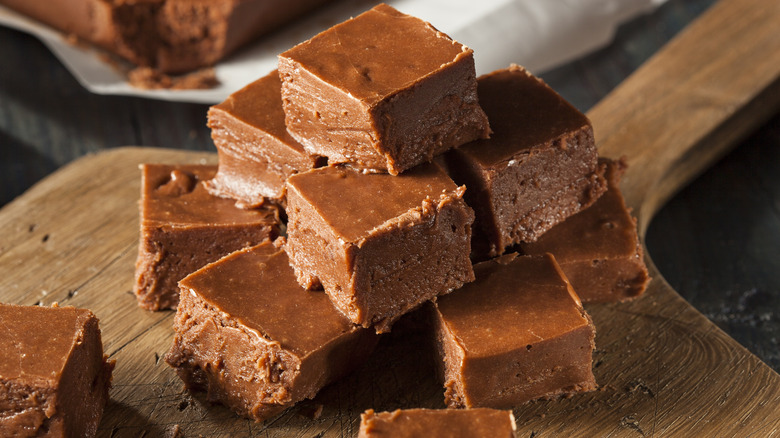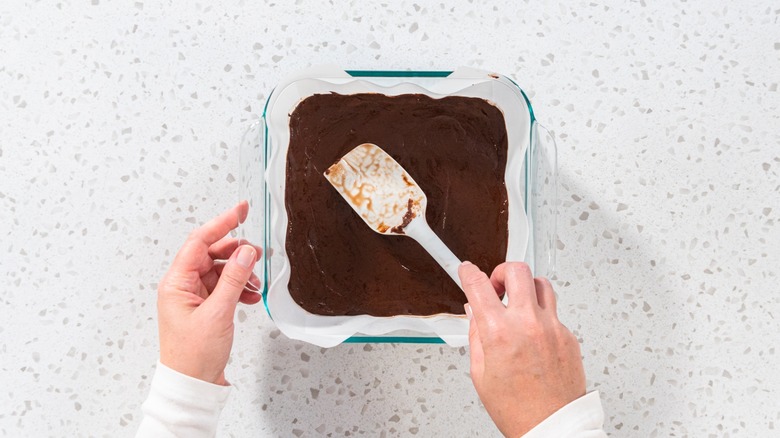How Your Choice Of Pan Can Affect The Quality Of Your Homemade Fudge
Ah, fudge. Who doesn't love those delightful squares of rich chocolatey goodness? Making it can seem either deceptively simple or overly complicated, as recipes rarely call for more than a few ingredients and because there are many tips you need to make the best fudge. While there are plenty of considerations around your approach to fudge, one important step is choosing the right pot. Selecting the best material, size, and shape helps ensure your favorite fudge recipe turns out successfully.
Using the wrong pan can affect the quality of your fudge. A pan that doesn't conduct heat evenly can cause the sugar to burn, resulting in an unpleasant taste and texture that can't be fixed. If the pan does not have straight sides, it can be challenging to get an accurate temperature reading, which is fundamental in cooking fudge. Additionally, a pan that is too large or too small can lead to overcooked or undercooked fudge, making it too hard or too soft. Sugar crystallization is another common issue that can happen without proper heat distribution, leading to grainy fudge.
Avoiding common fudge issues
While not all fudge recipes are finicky — this two-ingredient vanilla fudge doesn't need to be heated on the stove at all — many do require stovetop preparation and your undivided attention. You can set yourself up for success by using the correct pot. Using a copper pan, for example, can help ensure even heat distribution, which prevents sugar from burning and keeps the fudge smooth and creamy. Copper is excellent at conducting heat, but not everyone has copper cookware. A stainless steel pan with an aluminum core is a great alternative. The aluminum layer helps with heat conduction, so your fudge cooks evenly and you reduce the risk of crystallization.
Choosing a pan with straight sides can help you get accurate temperature readings — make sure you have a thermometer handy — which is a key part of achieving the best fudge consistency. Accurate temperature measurement keeps your fudge from being over- or undercooked, which means it won't be too hard and crumbly or too soft and gooey. Opting for the appropriate pan size gives you better control of cooking times, keeping the fudge temperature even and not heating it too quickly, which can lead to burning. Following recipes exactly and using a thermometer are essential fudge-making tips, but having the best pan for the job is equally important for picture-perfect results.

